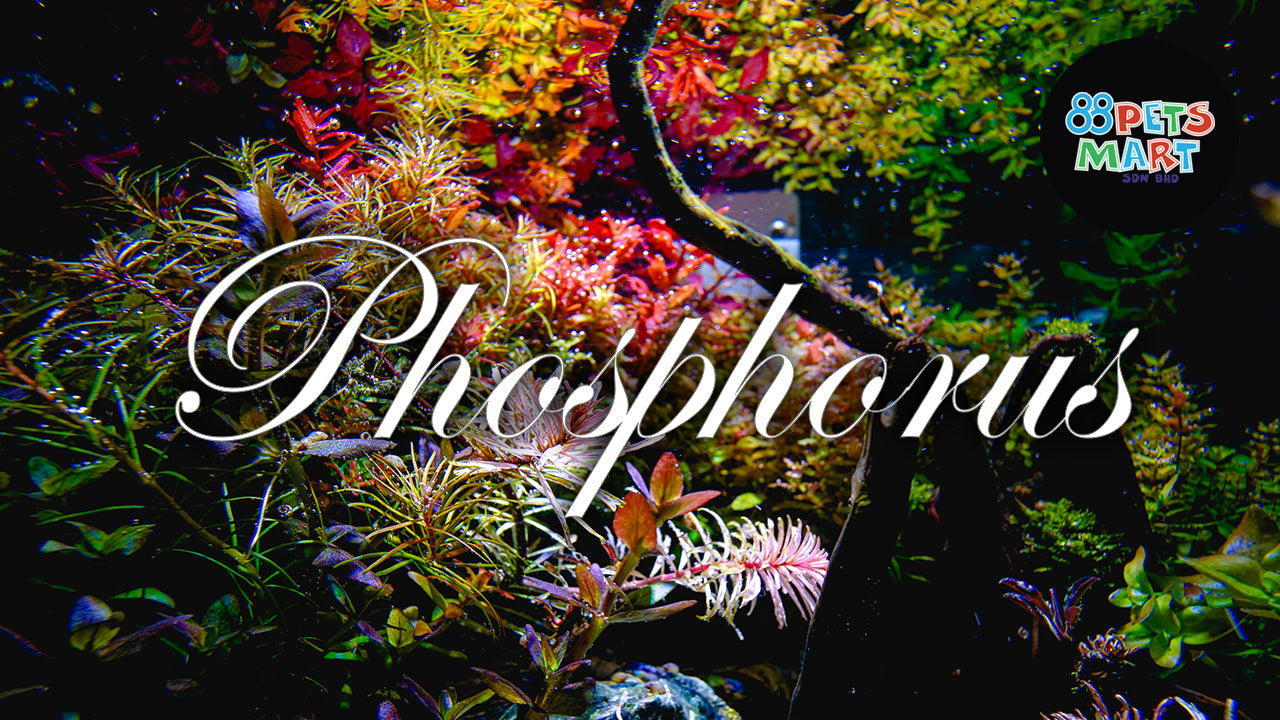
Understanding Phosphorus in Aquascape
Phosphorus and NPK
As mentioned previously, phosphorus is part of the NPK ratio which stands for Nitrogen, Phosphorus, and Potassium. The ratio between these 3 is very important to keep plants alive and healthy. So if you’re into aquascaping, you’ll need to follow this ratio. That being said, the recommended ratio is not consistent as different plant combinations might have different needs. The type of fish and equipment will also result in changes to the ratio for you. But in general, 20:1:20 is a good start, though the ratio might be adjusted to 10:1:20 or 20:1:15 or 5:1:20 and so on. One thing for certain is that phosphorus is the lowest concentration of the three nutrients and it determines how much nitrogen and potassium is needed.
Ideally phosphorus should be kept in the range of 0.1 to 1mg/L. It should never be allowed to fall below 0.1mg/L but it is acceptable to be more than 1mg/L as long as the plants are healthy and no algae can be seen. To prevent algae from growing in a high phosphorus concentrated water, nitrogen needs to be in the correct ratio. For instance, if your phosphorus has accumulated to 1.5mg/L, your nitrogen should be somewhere around 15 to 30mg/L. This will allow the plants to grow fast enough to combat the algae. As long as you have proper lighting and the right CO2 concentration, your plants should be able to win the race against algae.
Sometimes we would want to maintain a closer nitrogen and phosphorus ratio as this would result in red coloured plants that are more vibrant. But we also have to consider the growth of algae, and whether there are other plants that require higher nitrogen concentration.

Where does phosphorus come from?
Phosphorus in an aquarium normally comes from fish food or any decaying organic matter with phosphorus in their body such as plants and fishes. Under normal conditions, this naturally occurring phosphorus in an aquarium will not be sufficient to sustain a healthy aquascape. Fortunately, phosphorus nutrients for aquatic plants can be easily purchased. I recommend standalone phosphorus nutrients such as Seachem Flourish Phosphorus or Continuum Aquatics Flora VIV P or Aquavitro Activate instead of bottles with mixed nutrients so that we can tailor to the proper NPK ratio that we need.
Proper way to use phosphorus fertilisers
It is very important to read the instruction label carefully and not just follow the recommended dosage per week blindly. Instead, take note of how much phosphorus a single dose will raise. Most brands have a lower dose recommendation. This dose will be sufficient if you have a lightly planted aquarium or only during the initial setup stage. But when your tank starts to mature, this dosage will not be sufficient. Therefore it is very important to do phosphate testing and adjust the dosage yourself. It is needless to say that you should use a phosphate taster that is able to measure low levels of phosphate accurately. I recommend the Salifert Phosphate PO4 test for this. Although for the time being, Salifert freshwater Phosphate tester is not yet available but the marine version will do just fine.
What happens when phosphorus is not in the right ratio in an aquascape?
When your phosphorus falls below 0.1mg/L, plant growth will be affected. You will see stunted growth or dull coloration. Accumulation of unnaturally high nitrate levels will also occur when your phosphorus has been depleted. This is because once one of the NPK elements has been depleted, the plants can’t utilise the other two that are still available.
Phosphorus that is allowed to accumulate beyond its proper ratio will encourage the growth of many algae especially cyanobacteria AKA blue green algae (BGA) or slim algae. Cyanobacteria doesn’t require nitrogen to grow therefore it will take advantage of the ratio imbalance between nitrogen to phosphorus to outgrow the plants.

How to lower phosphorus?
A phosphate remover with a filter media can be used to help lower the phosphorus level. There are 2 types of phosphate removers, iron oxide and aluminium oxide. Aluminium oxide is usually more commonly recommended as absorbs phosphate quicker than iron oxide and doesn’t deplete them completely. However you might need to remove the absorbent frequently because once it’s exhausted, the absorbed phosphate will start to leach back out along with aluminium.
Before you decide to use any phosphate removal media, do check for the reason of the phosphorus accumulation and see if there’s a way to improve it. It could be due to over-feeding, lack of water changes, imbalance of nutrients, or fertiliser overdose.